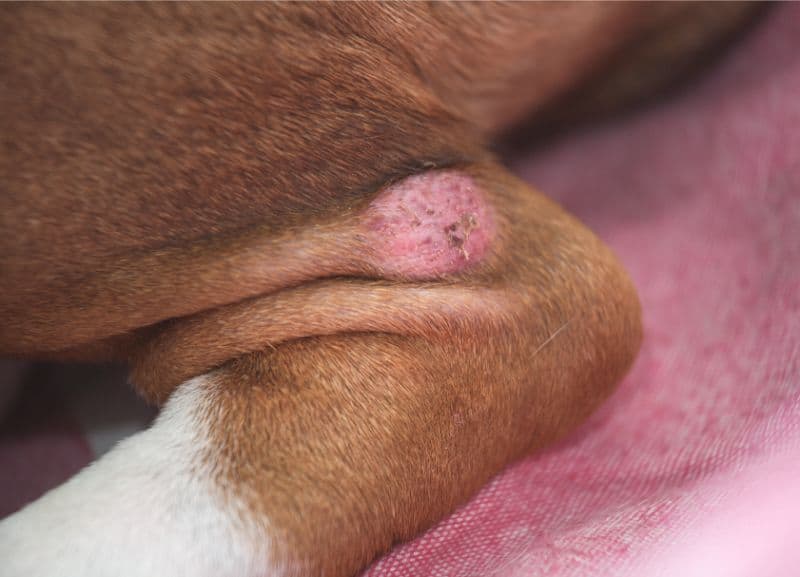Lumps and Bumps in Pets: What’s Normal and When to Worry

Discovering a lump or bump on your pet can be extremely disconcerting. Thoughts jump to the worst – is it cancer? An infection? Some other type of pet emergency?
Lumps and bumps in pets can be frightening, but the majority of these masses are benign. If you discover a lump or bump on your pet that wasn’t there before, your friends at Mobile Vet, MD are here to help you tell the normal from the bad.
Causes of Bumps in Pets
Bumps in pets tend to fall into one of the following categories:
- An infection or abscess
- A reaction to something foreign in the body (also called a granuloma)
- A tumor (either benign or malignant)
- A harmless growth such as a skin tag, cyst, or warty growth
In many cases, a new growth on your pet can be looked at by your veterinarian at your pet’s next appointment. Some, however, warrant more immediate attention. Give us a call if your pet’s bump meets any of the following criteria:
- The area is painful to the touch or when your pet moves, especially any bumps located in the groin or armpit
- The bump is noticeably growing or changing over the course of a month or less
- There is discharge, bleeding, redness, or swelling in the area
- Your pet has been previously diagnosed with cancer
- Your pet is a short-haired breed prone to cancer (boxers, pit bulls, etc.)
- Your pet is 7 years old or older
- All lumps and bumps on cats should be investigated by a veterinarian
Several bumps that appear out of nowhere and increase in size rapidly may indicate an allergic reaction. Seek emergency medical care for your pet immediately.
Diagnosis and Treatment
When we assess lumps and bumps in pets, we are taking several factors into consideration. The location of the growth, its shape, size, and which tissues appear to be involved all determine the diagnosis and treatment plan. The relative shape, size, and location will be recorded in your pet’s medical chart for future reference.
We may recommend removal of a lump, even if it’s benign. Lumps or bumps that impede movement, are growing rapidly, or are bothering the pet are examples of situations where removal may be recommended.
If your veterinarian wants to get a better idea of what the lump or bump is comprised of, we may order a biopsy or a fine needle aspirate test. In a biopsy, a sample is removed surgically and sent to a laboratory for evaluation. A fine needle aspirate involves collecting a sample from within the lump using a needle, and examining the cells under a microscope.
Regardless of what is causing the lump or bump, having it checked out is never a bad idea. Don’t hesitate to contact your Mobile Vet, MD team for more information, or to schedule an appointment.
